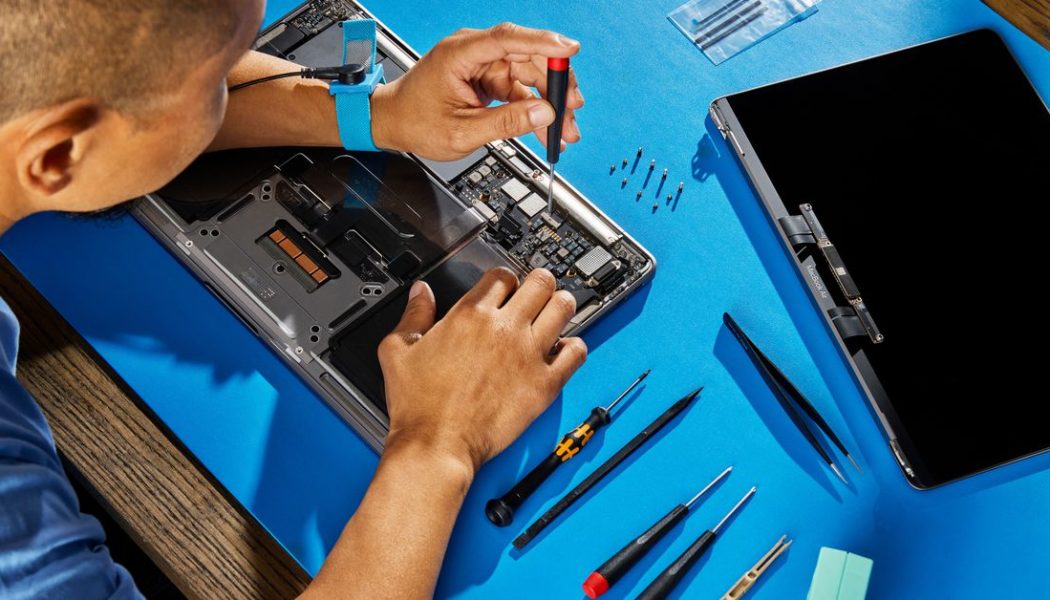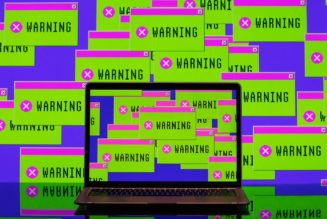/cdn.vox-cdn.com/uploads/chorus_asset/file/24266975/Apple_EU_Self_Service_repair_MacBook_Air.jpg)
Apple’s self-service repair program, which is designed to let customers repair their own iPhones and MacBooks, is launching in Europe. The company announced today that genuine Apple parts, tools, and manuals will be available to customers in Belgium, France, Germany, Italy, Poland, Spain, Sweden, and the UK to perform their own repairs.
Spare parts are available via Apple’s self service repair store, which features a drop-down menu in the top right to select the correct country. As with the service’s launch in the US earlier this year, customers will be able to rent tools to perform the repairs rather than needing to purchase them outright, and receive discounts by sending in their replaced parts to Apple for refurbishment or recycling.
“We want customers to have many options for safe, reliable, and secure repair”
Devices that support DIY repairs include the iPhone 12 and 13 series (though there’s no sign of support for recently-released iPhone 14 devices), the third-generation iPhone SE, as well as “Mac notebooks with Apple silicon.” There are 200 individual parts and tools available via the service alongside official repair manuals, sold at the same price as to the company’s network of authorized repair providers.
In terms of pricing, a replacement battery part bundle for the iPhone 13 costs £70.78 (€77.04), with a £24.16 (€26.26) credit available if you return your replaced part. A display repair bundle for the same phone more expensive at £282.28 (€327.11), with a £34.85 (€40.32) credit available for returning the replaced part.
Apple’s DIY repair program first launched in the US in April, marking a huge shift for a company that’s historically been reluctant to let customers repair their own devices. Instead, the company has previously restricted the availability of genuine parts to authorized service providers, before launching a program designed for independent repair shops in 2019.
But allowing customers to repair their own devices is important for people who may not live close to a properly equipped repair technician, keeping devices usable for longer and hence out of landfill. “When a repair is needed, we want customers to have many options for safe, reliable, and secure repair,” said Apple’s chief operating officer, Jeff Williams. “That’s why we’re excited to launch Self Service Repair in Europe, giving our customers direct access to genuine Apple parts, tools, and manuals.”
Although DIY repairs will now be possible in several European countries, Apple’s press release still steers people towards using a professional service where possible. The company notes that the program is designed for “customers who are experienced with the complexities of repairing electronic devices” and adds that “visiting a professional repair provider with certified technicians who use genuine Apple parts is the safest and most reliable way to get a repair.”
Apple is one of several companies which has moved to make it easier for customers to repair their own consumer electronics. Google, Samsung, and even Valve have announced partnerships with DIY repair specialists iFixit to provide spare parts to people looking to perform their own repairs.
As well as making it easier for normal people to access spare parts, tools, and manuals, there are early signs that Apple is also making its phones more repairable in the first place. Although the iPhone 14 was widely criticized for its similarity to the iPhone 13, iFixit reported that the company had tweaked its internal design, making it “the most repairable iPhone in years.” It’s still a far cry from the easily accessible screws and modular components of a Fairphone, but it’s a step in the right direction.









